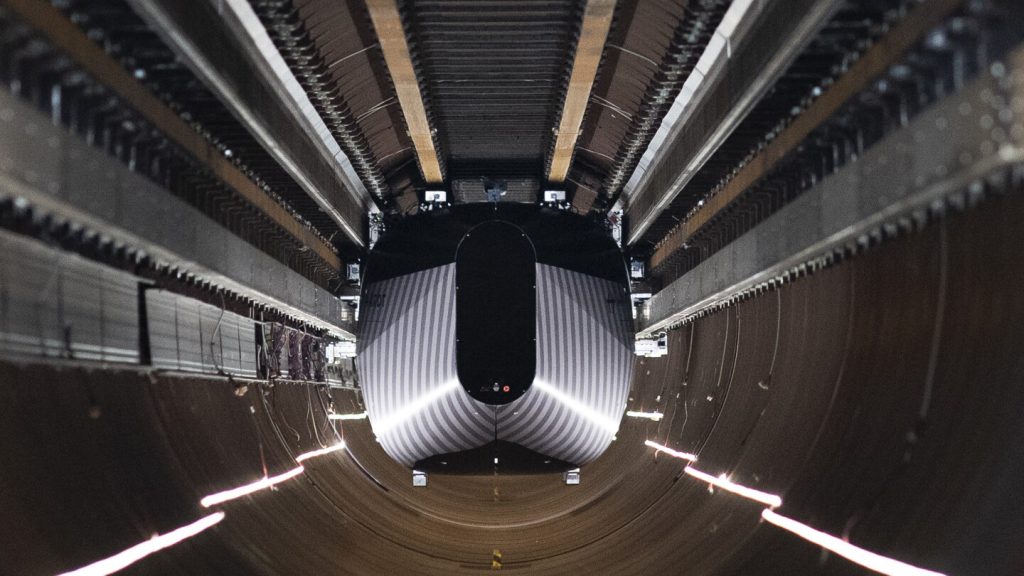A company developing the technology for hyperloop, a new form of mass transit involving capsules traveling on magnetic fields through depressurized tubes, has announced significant progress in the northern Netherlands. The European Hyperloop Center successfully levitated and propelled a test vehicle through a 420-meter tube, showcasing the potential of this high-speed transit system initially proposed by Elon Musk. By reducing internal pressure in the tubes, air resistance is minimized, allowing capsules to reach speeds of up to 700 kph (435 mph). This mode of transportation is being positioned as a more efficient alternative to short-haul flights, high-speed rail, and freight trucks, although significant infrastructure investments will be required for its implementation.
While the current test speeds at the center have been modest, reaching up to 30 kph (18 mph) over a distance of 100 meters (more than 300 feet), the successful execution of levitation, propulsion, and guidance functions is a major milestone for the development of hyperloop technology. Roel van de Pas, the commercial director of Hardt Hyperloop, highlighted the complexity of integrating these functions to work harmoniously, comparing it to conducting an orchestra. The ultimate goal is to have passenger operations in place by 2030, emphasizing the need for technology, policy, and public-private collaboration to make hyperloop a viable mobility system for the future.
Elon Musk originally proposed the hyperloop concept over a decade ago, envisioning it as a rapid transportation method between Los Angeles and San Francisco. Since then, global teams have been striving to bring this idea to reality, with the European Hyperloop Center making significant strides towards achieving this vision. However, some analysts remain skeptical about the feasibility of hyperloop, citing the high costs of building the necessary infrastructure. Despite these challenges, companies like Hyperloop One have pursued partnerships with cities like Dubai to explore the potential for hyperloop connections, although progress in these ventures has been limited.
In Dubai, Hyperloop One signed a deal in 2016 to study the feasibility of a hyperloop line between the city-state and Abu Dhabi. The grand announcement, made atop the Burj Khalifa, the world’s tallest building, symbolized Dubai’s ambition to embrace futuristic transportation solutions. However, like many ambitious projects in the city-state, the hyperloop idea did not materialize, with Hyperloop One shutting down in December. This highlights the challenges and uncertainties surrounding the implementation of hyperloop technology on a large scale. Despite these setbacks, companies like Hardt Hyperloop are committed to addressing the technical, policy, and collaborative aspects necessary for the successful deployment of hyperloop as a viable mobility solution in the coming decade.


